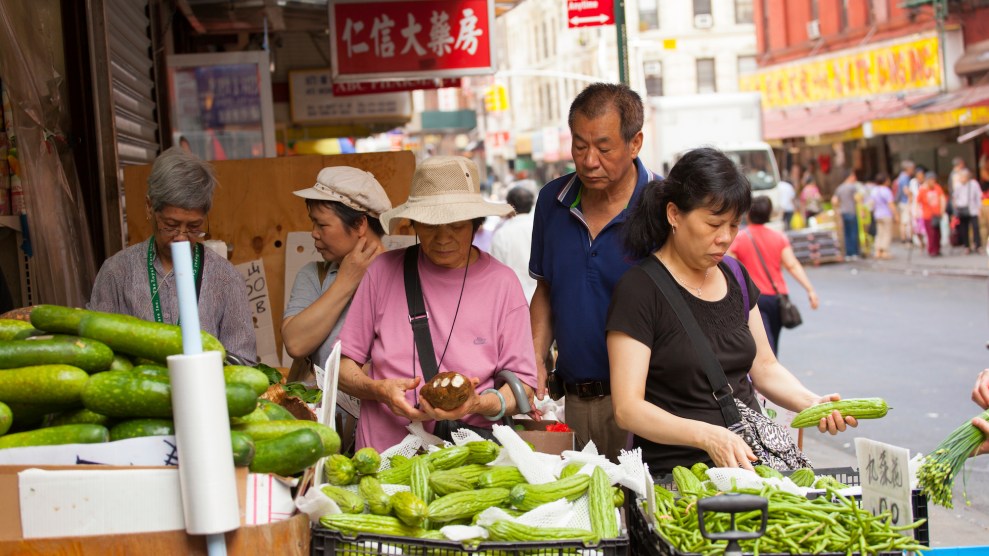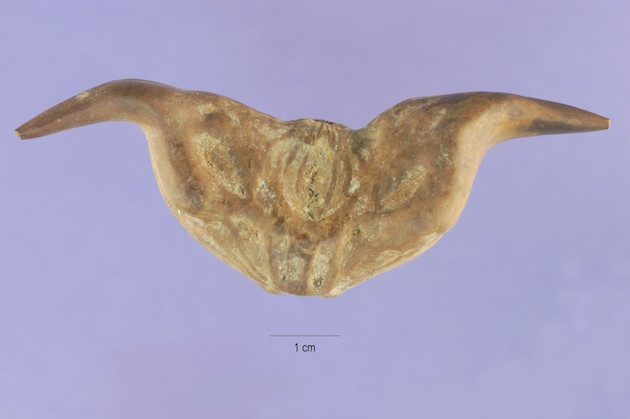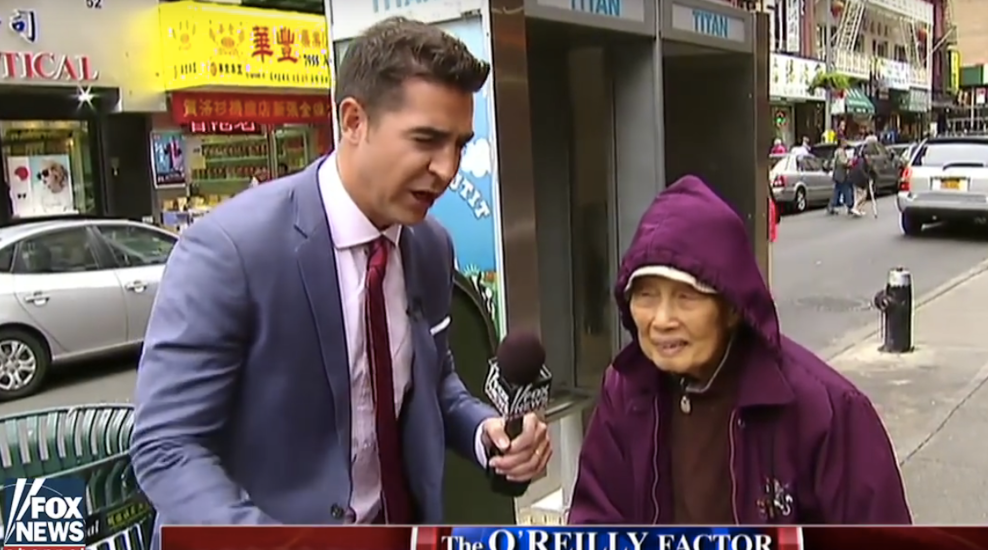
Manhattan's Chinatown: produce paradise <a href="http://www.istockphoto.com/photo/fruit-and-vegetable-stand-in-chinatown-gm506433402-84207501?st=_p_chinatown%20manhattan">Antonio Gravante</a>/iStock
Bite is Mother Jones‘ new food politics podcast. Listen to all our episodes here, or by subscribing in iTunes or Stitcher or via RSS.
Manhattan’s Chinatown recently made headlines for being the target of a racist “man on the street” segment on Bill O’Reilly’s Fox News show. But Fox missed the real story: the truly special place that Chinatown occupies in the US food scene.
Navigate the narrow, bustling sidewalks of Mott Street between Canal and Hester and you’ll see food everywhere. Tiny open-air shops and food carts brandish great mounds of produce of all kinds, from the mundane (broccoli) to the rare (magenta-hued dragon fruit). Live lobsters and even frogs wriggle in open vats, next to whole fish carcasses laid out on ice. Boxes of dried fish and squid perfume the air. Shopkeepers move about, arranging and replenishing their displays and bantering with customers in Mandarin or Cantonese while tourists gape.
What makes culinary Chinatown tick? For answers, we turn on this week’s Bite podcast to Valerie Imbruce, author of the new book From Farm to Canal Street: Chinatown’s Alternative Food Network in the Global Marketplace and assistant director of research development at Binghampton College. Imbruce argues that Manhattan’s Chinatown is a remnant of pre-supermarket New York—and also a viable model for a more tantalizing food future.
Here are a few choice nuggets from Imbruce’s book:
- On any given day, Chinatown shoppers encounter “at least 135 different fruits and vegetables to choose from,” Imbruce reports. Over the course of a year, she finds, there are more than 200.
- Whereas the broader US grocery industry has consolidated dramatically in recent decades—with bigger and bigger corporate-owned chains gobbling up market share—”Chinatown works on a micro basis,” as one neighborhood denizen tells Imbruce. Chinatown boasts a jaw-dropping 88 produce retailers and nine wholesalers—and all of them have fewer than 20 employers, and 80 percent have just 4 or fewer.
- Those nine Chinatown wholesalers, though, exert influence far from their Lower Manhattan perch. They control the produce that flows into Chinese enclaves up and down the East Coast, she reports.
- If you want to find what Imbruce describes as “one of the strangest vegetables in Chinatown,” now’s the time. Available in September and October, it’s the seed pod of an aquatic plant species called Trapa bicornis, which also goes by the names bat head, goat head, bull nut, buffalo nut, and water caltrops. It comes by its evocative names honestly—the “illusion of an evil face appears on both sides of the pod, and the two faces are usually quite unique in visage,” she reports. Here’s an image of one:
 USDA ARS Systematic Botany and Mycology Laboratory.
USDA ARS Systematic Botany and Mycology Laboratory. - Very little Chinatown produce is grown in China or even Asia. It comes mainly from specialized farms in Florida, Mexico, and Honduras. The great bulk of Florida production comes from three large, highly diversified farms in the central part of the state, Imbruce reports. But in southern Florida, the only mainland US region with a tropical climate, immigrants from Southeast Asia have established tiny “homegarden” operations, growing a stunning variety of tropical fruits and vegetables for the Chinatown market. In Honduras, Chinatown sources from more than 400 small farms.
- Far-flung as they are, the farmers who supply Chinatown tend to have direct relationships with Chinatown’s wholesalers, bypassing other brokers and keeping prices low. Many of the farmers are of Chinese descent; some aren’t.
- So Chinatown represents the economic equivalent of a hybrid in plant breeding: It combines microscale neighborhood enterprise based on direct relationships with globalized supply chains marked by “open borders, the continuous cool-chain technology necessary for shipping perishable goods, and integrated transportation networks,” as Imbruce notes. It fuses an economic model as old as cities themselves with ones that are distinctly modern.
Tune in to Bite to hear more.














